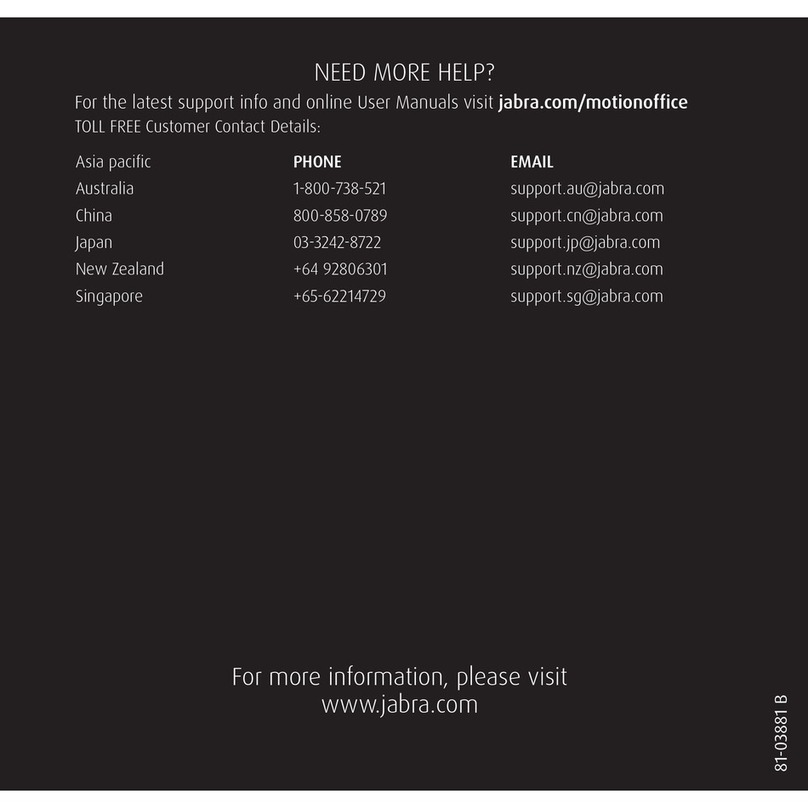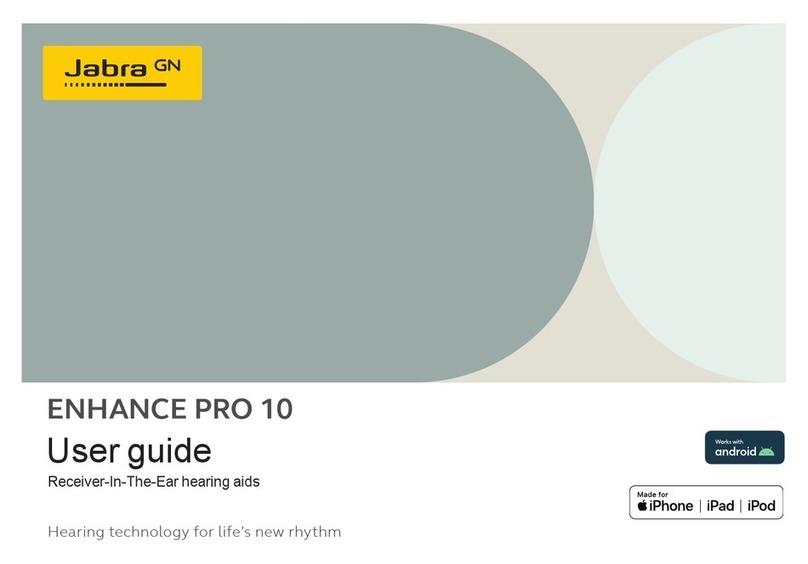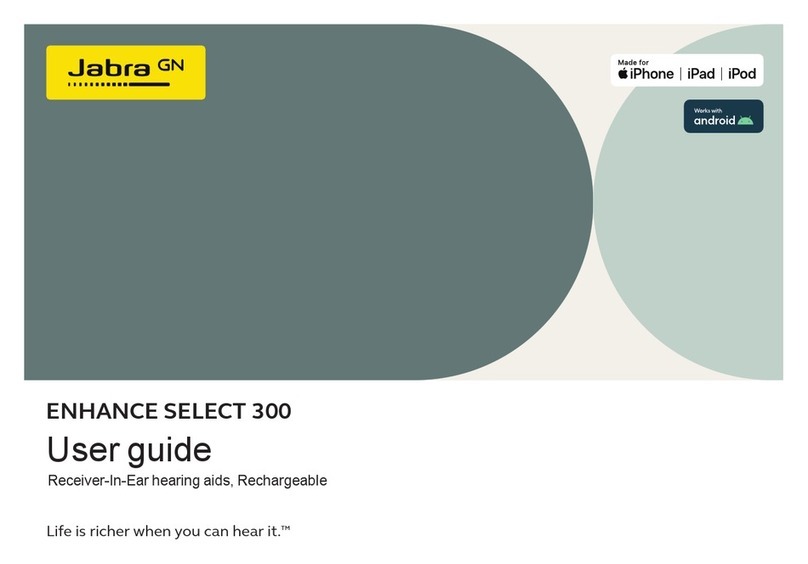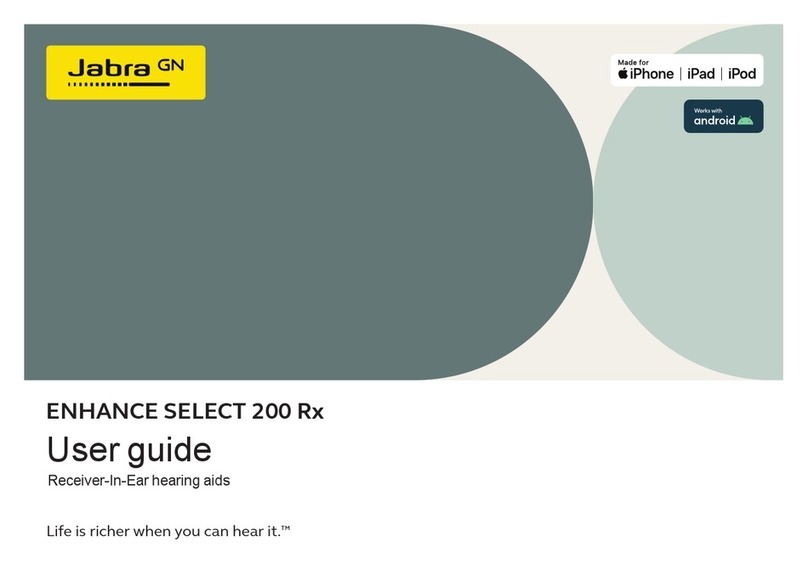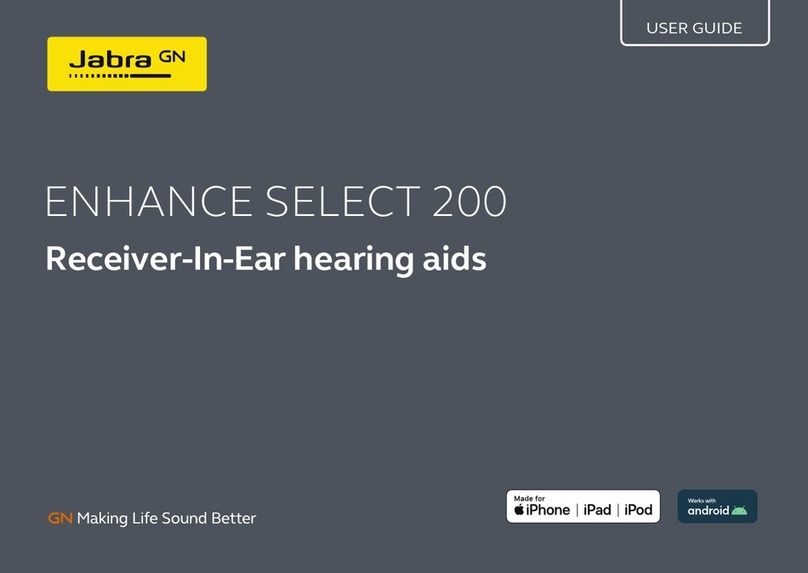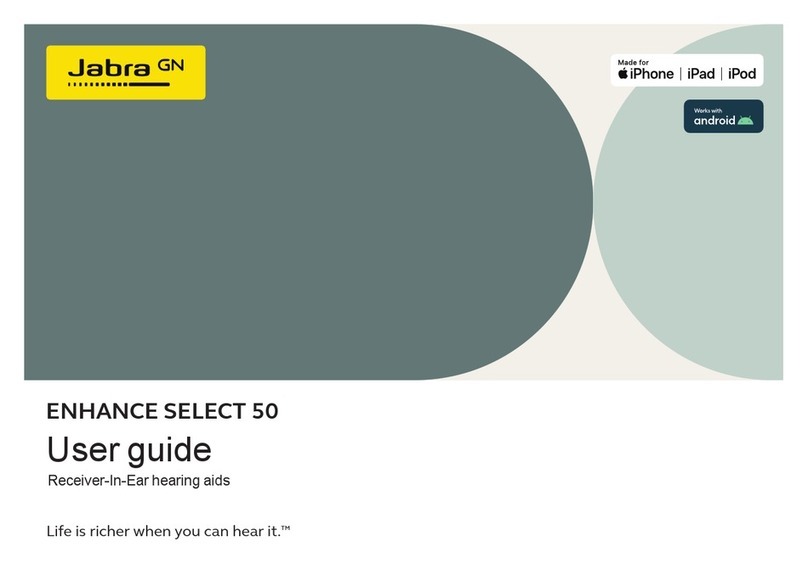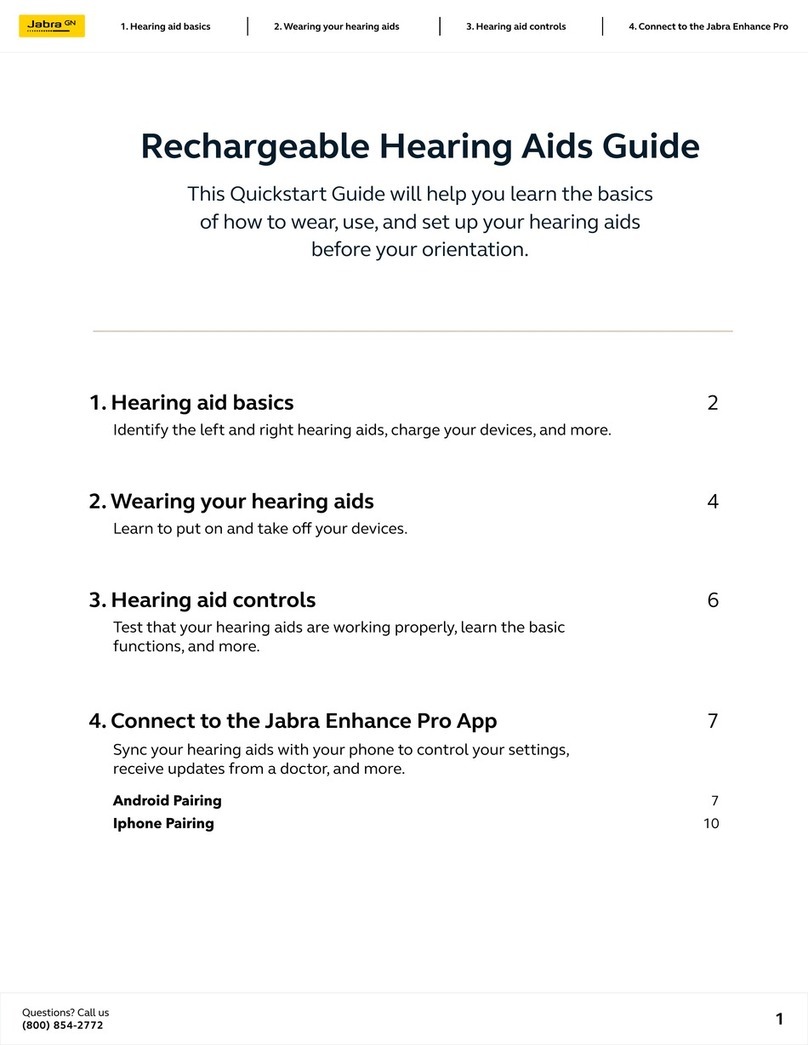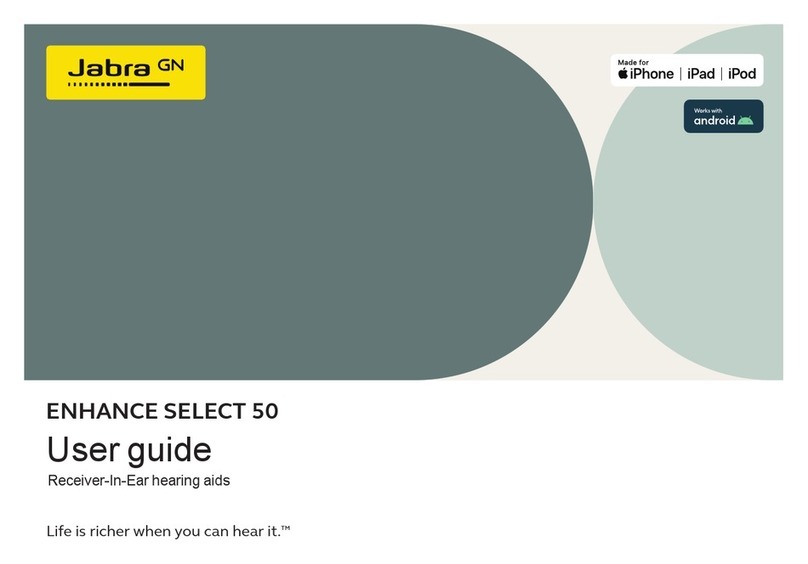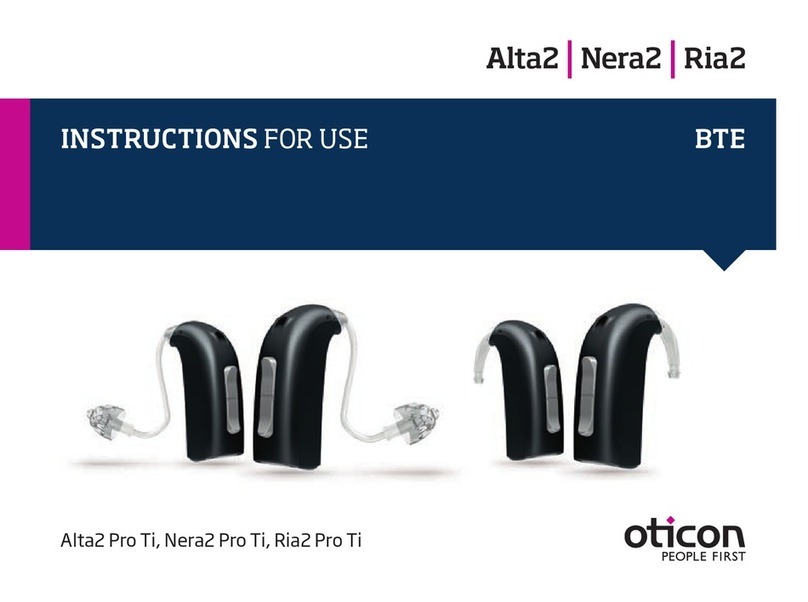
Preparing your hearing aids for use
Battery warnings
WARNING: Batteries contain dangerous substances and should be disposed of carefully in the interest of
your safety and for the environment. Please note:
1. Keep hearing aid batteries away from pets, children and people with cognitive, intellectual or mental
health challenges.
2. Never put a hearing aid battery in your mouth.
3. Never swallow batteries nor place them inside any part of the body, as the battery can cause serious
injuries. If a battery has been swallowed or placed inside any part of the body, seek immediate medical
attention.
4. Do not recharge zinc-air batteries – they may leak or explode.
5. Do not attempt to dispose of batteries by burning them.
6. Used batteries are harmful to the environment. Please dispose of them according to local regulations
or return them to your hearing care professional.
7. Batteries may leak. Remove the battery if you leave the hearing aids unused for longer periods.
8. If the batteries are not inserted correctly, the device will not work and the batteries may build up heat. If
this happens, please remove the batteries.
8Preparing your hearing aids for use
